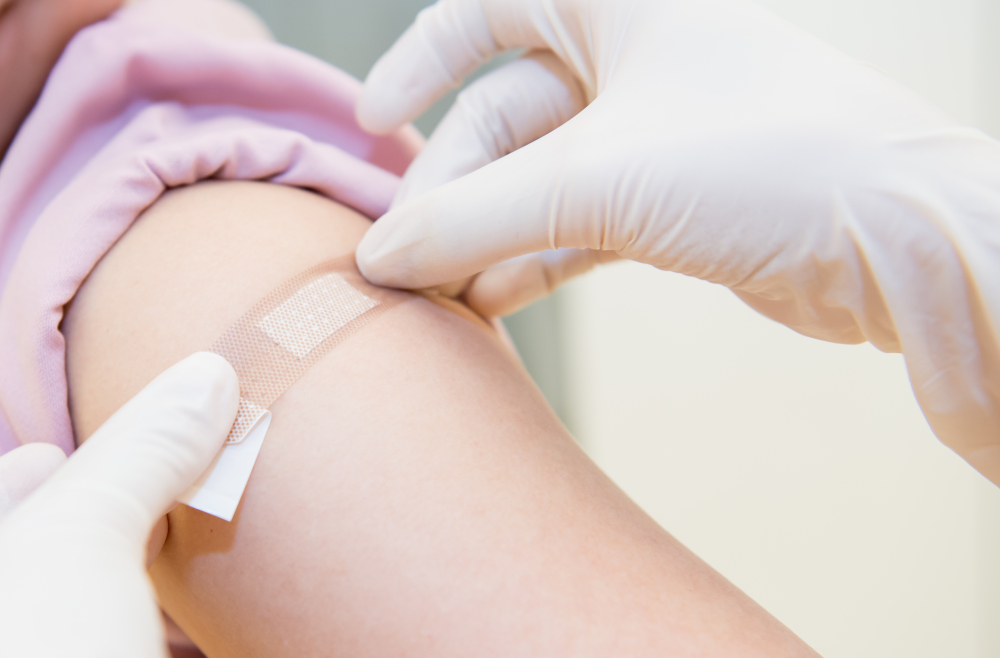August is National Immunization Awareness Month. With the worldwide focus on developing a vaccine for COVID-19. I sat down with Lightbeam Clinical Transformation Advisor, Christine DiNoia, BSN, RN, on the Population Health Podcast to discuss National Immunization Awareness Month. We are continuing our conversation on the blog to offer additional resources on the topics we discussed.
Christine, what kinds of measures do you anticipate will be put into place to administer vaccines in 2020?
Immunizations can still be delivered safely as long as the proper guidance to mitigate the COVID-19 spread is taken seriously. Per the Centers for Disease Control and Prevention’s (CDC) recommendations, healthcare providers should not administer vaccines to those who have been exposed or test positive for coronavirus, should encourage home vaccinations, implement thought-out strategies for catch-up vaccinations later, and communicate effectively with members of staff.
Given the unusual circumstances of this year, the CDC notes that care managers, regardless of where they administer a vaccine, should maintain the standards of storage, handling, and documentation to ensure the immunization is part of their record. For patients that choose to visit the office to receive their vaccine, avoiding a high volume of patients at once can decrease the chances of the coronavirus spreading. For that reason, scheduling appointments to receive a flu shot can prevent potential overcrowding at a clinic and ensure there is enough staff to move the process along, among other steps to promote organization.
What are the phases of clinical trials for those who don’t know?
Six broken-down steps make up the three phases of vaccine development, according to the CDC:
- Exploratory stage
- Pre-clinical stage
- Clinical development
- Regulatory review and approval
- Manufacturing
- Quality control
Phase I encompasses a small group of 20 to 100 healthy volunteers that choose to receive the vaccine to determine its safety, viability, dosage, and severity of side effects. In Phase II, the clinical study expands to include hundreds of people, assessing the common side effects that are short-term and how the participants’ immune system responds. The experts administering the vaccine will try to vary the subjects by characteristics like age to assess response. In Phase III, the trial vaccine is given to thousands of subjects as the third round of testing for safety, effectiveness, and side effects. Later, the vaccine developer submits a Biologics License Application (BLA) to the US Food & Drug Administration, where it undergoes additional risk and benefit assessments.
How are vaccines monitored after they are approved?
The FDA and CDC co-sponsor what is called the Vaccine Adverse Event Reporting System (VAERS). The program is how any negative experiences or side effects of vaccines are logged in the United States. Anyone can submit their report, not just a healthcare professional.
Will COVID affect annual flu vaccinations? What are some things to consider?
That is a major concern. Since the start of the COVID-19 pandemic, the primary fear beyond the virus’s unknown properties was hospital overcrowding. With influenza season around the corner coupled with COVID, the push for flu immunizations is critical; this winter, hospitals could burst at the seams. Health Affairs anticipates a potential decrease in flu vaccinations during COVID due to several factors:
- Patients are reluctant to seek any medical treatment. 73% of Americans are still social distancing always or often, with 66% that believe healthy individuals should avoid going out whenever possible.
- There are misconceptions that may minimize the seriousness of the flu compared to COVID.
- It’s predicted that from 25 to 43 million Americans may lose their health insurance coverage due to the economic impact of COVID-19.
So, how do physicians and care managers combat this? It isn’t easy, as COVID-19 currently dominates the conversation across practically every media outlet and care venue. Health Affairs points out that there are methods to use messaging surrounding COVID-19 to tactfully drive patients to get influenza vaccinations; make sure that any communications are action-driven, not pointing out what to fear without a means of addressing it, and crafting testimonials rather than faceless statistics.
Where do you start building a 2020 immunization plan with care management teams? What is the most significant piece of advice you can offer?
With any immunization, the focus often comes back to targeting the high-risk, often comorbid patients who are especially vulnerable to viruses like the flu. But vaccinations are one of the most critical, primary forms of preventative care for healthy patients, too. When it comes to the planning and preparation process of getting the word out to staff and patients, start early. Make sure all members of staff are on the same page; disseminate information on safe vaccine administration in the way that makes the most sense, whether that is via email, phone calls, or paper handouts. More importantly, make sure they are vaccinated first! The most significant piece of advice I can offer is to take advantage of the educational resources out there to combat the lack of information or misinformation, which can lead to misconceptions about immunizations. Also, keeping accurate records of immunizations so healthcare professionals can easily identify those still in need of vaccination. I go back to the CDC, the FDA, the American Academy of Family Physicians (AAFP), and the like.
What is the status of the COVID-19 vaccine?
We have several companies that are either in or about to enter Phase III trials. The United States hopes to begin the delivery of 300 million doses of an FDA-authorized safe, effective vaccine for COVID-19 by the end of the year or the beginning of 2021. It is part of a broader strategy to accelerate the development, manufacturing, and distribution of COVID-19 vaccines, therapeutics, and diagnostics.
The Department of Defense (DoD) and the Department of Health and Human Services (DHHS) forged an agreement with Pfizer Inc. for the production and nationwide delivery of 100 million doses of a COVID-19 vaccine, with the opportunity to acquire 500 million more later. “By entering into this agreement now, a safe and effective vaccine can be shipped quickly if FDA grants EUA or licensure.”
For more information on National Immunization Awareness Month, visit the Centers for Disease Control and Prevention and the US Food & Drug Administration. For further questions on clinical transformation with Lightbeam, contact us.

Laurel Derr is Lightbeam’s Marketing & Event Coordinator.
